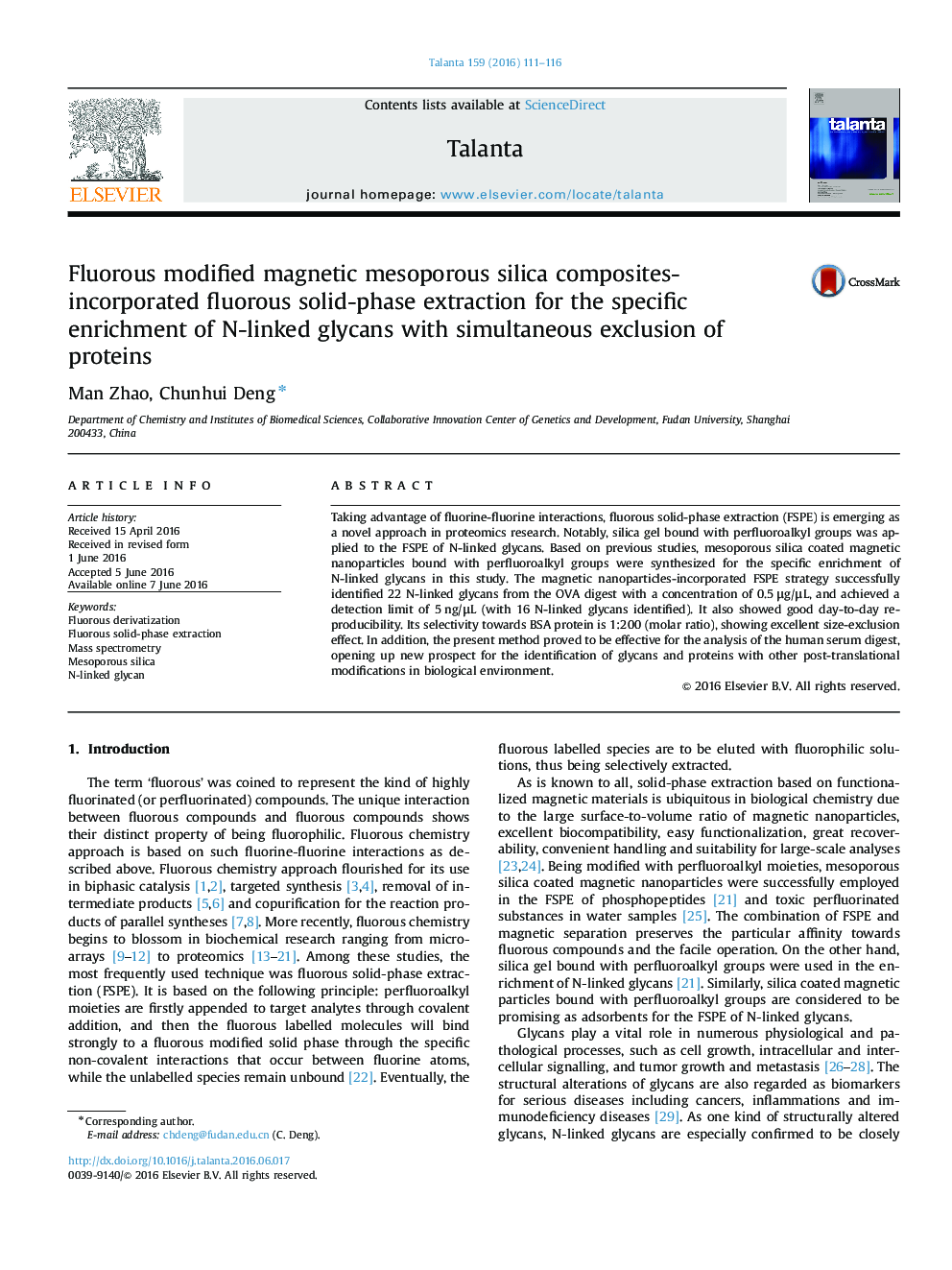| Article ID | Journal | Published Year | Pages | File Type |
|---|---|---|---|---|
| 1241753 | Talanta | 2016 | 6 Pages |
•Fe3O4@mSiO2-C8F17 microspheres were synthesized through a surfactant-mediated one-pot approach and applied to the enrichment of fluorous derivatized glycans.•Fe3O4@mSiO2-C8F17 microspheres showed strong affinity towards fluorous derivatized N-linked glycans, and simultaneously excluded proteins.•In result, 16 glycans were identified from an OVA digest (5 ng/μL), and 17 glycans were identified from a mixture of OVA digest and BSA (at a molar ratio of 1:200).
Taking advantage of fluorine-fluorine interactions, fluorous solid-phase extraction (FSPE) is emerging as a novel approach in proteomics research. Notably, silica gel bound with perfluoroalkyl groups was applied to the FSPE of N-linked glycans. Based on previous studies, mesoporous silica coated magnetic nanoparticles bound with perfluoroalkyl groups were synthesized for the specific enrichment of N-linked glycans in this study. The magnetic nanoparticles-incorporated FSPE strategy successfully identified 22 N-linked glycans from the OVA digest with a concentration of 0.5 μg/μL, and achieved a detection limit of 5 ng/μL (with 16 N-linked glycans identified). It also showed good day-to-day reproducibility. Its selectivity towards BSA protein is 1:200 (molar ratio), showing excellent size-exclusion effect. In addition, the present method proved to be effective for the analysis of the human serum digest, opening up new prospect for the identification of glycans and proteins with other post-translational modifications in biological environment.
Graphical abstractThe magnetic nanoparticles-incorporated FSPE strategy successfully identified 16 N-linked glycans from a low-concentration OVA digest (5 ng/μL) and 17 glycans from a mixture of OVA digest and BSA proteins (at a molar ratio of 1:200).Figure optionsDownload full-size imageDownload as PowerPoint slide
